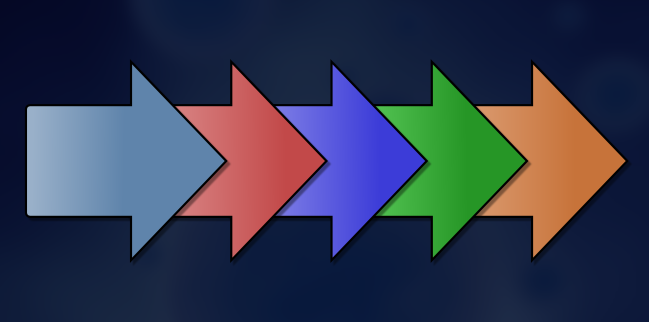What can CAQDAS do for you? The Five-Level QDA
I briefly mentioned in my last blog post an interesting new article by Silver and Woolf (2015) on teaching QDA (Qualitative Data Analysis) and CAQDAS (Computer Assisted Qualitative Data AnalysiS). It’s a great article, not only because it draws from more than 20 years combined pedagogical experience

I briefly mentioned in my last blog post an interesting new article by Silver and Woolf (2015) on teaching QDA (Qualitative Data Analysis) and CAQDAS (Computer Assisted Qualitative Data AnalysiS). It’s a great article, not only because it draws from more than 20 years combined pedagogical experience, but suggests a new way to guide students through using software for qualitative analysis.
The basis of the strategy is the ‘Five-Level QDA’ approach, which essentially aims to get students to stop and think about how they want to do their qualitative analysis before they dive head-first into learning a particular CAQDAS package. Users are guided through a five-step tool that I would paraphrase as:
- Stating the analysis/research objectives
- Devising an analytic plan
- Identifying matches between the plan and available tools
- Selecting which operations to do in which tools
- Creating a workflow of tools and software to meet all the aims above
For more detail, it’s worth checking out the full article which includes example worksheets, and there is also a textbook due out covering the approach in more depth. It’s also interesting to see how they describe the development of their pedagogical approach in the last decade or so.
The Five-Level method is designed to be delivered remotely, as well as in workshops, but to start out with being a software agnostic approach, drawing from the experience of the trainers to choose the best approach for each researcher and research project. Based around Analytic Planning Worksheets, it feels like the main aim is to get people to step back and think about their needs before learning the software.
This is often badly needed, mostly due to the practical limitations. Firstly, many people (especially new researchers) don’t do a detailed analytical plan when designing their project or research questions. In qualitative research, this is not always a disaster, often one source of investigation ends up being much richer than anticipated, and the variety of methods used mean that data doesn’t always look as we thought it would when we started (for better or worse).
However, there are also some very practical limitations which lead to people learning a CAQDAS package before they start their research journey. Often training courses are only offered once a semester (or year), so you need to take advantage of that when you can. While ideally there would be an interactive process between learning the capabilities and refining the analytical strategy, in the timescale of one project this is not always feasible. Often people have learnt so much after their first qualitative project, that the next time their analytical approach is extremely different.
The other issue is what CAQDAS is actually available: often a department or school will have a licence for just one (or maybe two) packages, and understandably, the training offered will often focus on those. There are also practical limitations when working as part of a team (especially people in a different institution) who might not have access to the same software. This affects the approach a lot, because it’s important to choose a workflow that everyone can participate in. I’ve been involved in projects where we end up using Excel for analysis, because everyone had access and familiarity with spreadsheet software.
I think that this is the kind of consideration that the Silver and Woolf worksheets are trying to tease out, and their examples illustrate how by point 5 people have chosen a number of tools that they can use together to answer their research questions.
As a final point, I think that RTP (Research Training Programmes) courses offered for post-grad students sometimes leave a lot to be desired on this front. Even those that are specifically on qualitative methodologies (where available) tend in my experience to have little more than a slide on the whole analysis process, and sometimes just a bullet point on software! I spend a lot of time talking to people about CAQDAS, and I am always surprised at how few people have heard even of NVivo, let alone a dozen alternative packages that I could name off the top of my head. Yet each has its own strengths and weaknesses: Transana is great for video, the Provalis products for stats geeks, MaxQDA a friendly all-rounder, Dedoose for working remotely, and Quirkos obviously for beginners.
But it’s a chicken and egg problem – to know what which software is best, you need to know what you can do with it. Which is why it can help so much to draw on the experience of CAQDAS trainers, but not just to go on a course and learn one package, but to go with an open mind and a research question, and let them suggest the best combination for each approach. In short, ask not what your CAQDAS can do for you, ask what you want to do with your CAQDAS!
Update (14/8/15):
Christain Schmieder has written a response to this blog post and the 5-level QDA, and how it links into his curriculum for qualitative question generation using CAQDAS.
